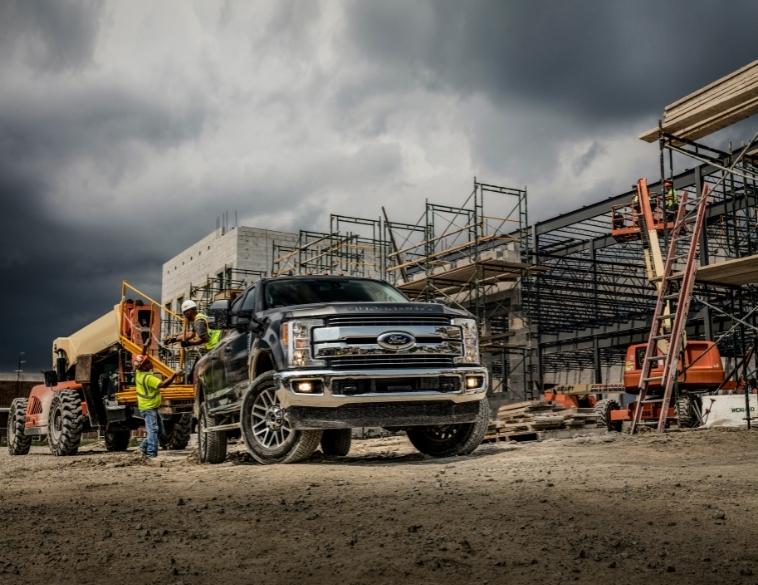LT tires are built to work, and to take on the rigours of a rugged lifestyle.
The popularity of online shopping has had a surprising impact on the LT (Light Truck) tire market. With so many of us expecting our goods to be delivered to our doorsteps, many transport companies have invested in smaller and more nimble delivery trucks.
These trucks need smaller tires than the large cube vans traditionally used for deliveries, as well as a higher load index that allows them to handle a decent amount of cargo.
“We’re starting to see more tire sizes for the light truck market,” explains Dan Cecchini, Owner of Reach Tire & Auto, Point S with locations in Kelowna, West Kelowna, Vernon, and Kamloops, B.C. “Part of the reason is we’re starting to get a lot more delivery vans and cargo vans, for example, like the Ford Transit, that have smaller tire sizes with heavier load ratings and carrying capacities.”
These smaller tires were typically P-Metric, Cecchini explains, “but now you’re getting a lot of these delivery vehicles that need a larger weight capacity, which is why those tires are now being made in an LT size.”
Rough/Rugged Terrain
Another interesting trend is the growth in the number of tire manufacturers that are offering RT (Rough/Rugged Terrain) tires for trucks. “Think of the RT tire as almost a crossbreed,” Cecchini says. “It’s kind of in between an AT (All-Terrain) and an MT (Mud-Terrain) tire because people want the aggressive appearance of an MT tire, but they’re noticing that they’re definitely getting more performance out of the AT than the MT. So a lot of manufacturers are now meeting in the middle with an RT tire.”
One of these manufacturers is Sailun. The company plans to bring to market a new RT tire in 2023. “We’re launching the Terramax RT, probably in Q2 of next year,” says David Pulla, Manager, National Sales, PLT for Sailun Tire Americas. “It will be more aggressive than the AT and milder than the MT. So essentially, it’s going to provide the on-road capabilities that your everyday drivers are looking for while providing the off-road capabilities and durability that enthusiasts want.”
James McIntyre, VP of Sales for Canada at Sailun Tire admits that although an RT tire is more capable in the dirt and mud than an AT tire, most vehicle owners will want an RT tire just because of the aggressive looks.
“I would guess that probably 80% of these vehicles will never see the dirt,” McIntyre adds, “but these tires look good. They look like an MT tire, but they don’t howl when you’re driving down a paved road.”
LT vs. P-Metric
Retailers are sometimes approached by customers who would like to swap out of a set of LT tires, and into a set of P-Metric tires, or vice versa. While the retailer would want to recommend that customers stick with the type of tire that came with their vehicles, some drivers might insist.
“In that case,” explains Darrin Bossence, VP Sales, Dynamic Tire, “it’s a function of what they’re going to be doing with the vehicle. If they’re not going to be towing or loading up the bed, and they’re just driving to and from work, you can essentially go to a P-Metric tire. Once you get into 2500- or 3500-series vehicles, however, you’ll need to stick with LT tires. But with a regular F-150, for example, depending on the model, you’ll be okay.”
Sailun’s McIntyre says he’s seen the opposite happen. Customers who have P-Metric tires on their trucks want to upgrade to LT tires but aren’t always happy with the results. “They come back to the retailer,” he adds, “and want to know why their truck is riding so rough.”
Dangers of swapping tire types
Greg Cressman, Director of Technical Services at Yokohama Tire Canada says that although it’s possible to switch a customer from LT to P-Metric tires, or vice versa, he recommends against doing so because consumers can get confused and the results can be catastrophic.
Cressman says the issue is the load/inflation relationship. Although an LT tire and a P-Metric tire may be the same size, they will need to be inflated to very different pressures in order to carry a pre-determined load.
The vehicle manufacturer determines the tire size and type, as well as the air pressure those tires will need to be inflated to in order to support the weight of the vehicle, and all the cargo/towing it is designed to handle. That tire pressure, in turn, is recorded on a sticker in the door jamb or in the glove box.
The problem, Cressman explains, is that if a retailer swaps a customer out of an LT tire into a P-Metric tire or vice versa, he won’t be able to change the recommended tire pressure that’s listed on the sticker. So now, the retailer has to count on the fact that the driver will remember that the sticker that came with the truck no longer applies. In addition, he would have to remember the new recommended tire pressure.
The danger is that the customer will forget. “There’s always going to be that one guy who doesn’t remember,” Cressman adds, “and he’s going to go back to the door jamb to find the recommended pressure, which will be too high or too low. He hits the road, the tire separates, and he crashes. That’s why I think you should just avoid it.”
Cressman adds that some pick-up owners, especially those who manage a fleet and know what they’re doing, can get away with a swap, but that’s because it’s their business, they maintain their tires properly and they can keep things straight when they change the type of tires they run. “The problem,” he concludes, “is you end up with somebody who doesn’t know what they’re doing, and the result will be unsafe.”






 MONTRÉAL
MONTRÉAL Full time
Full time


